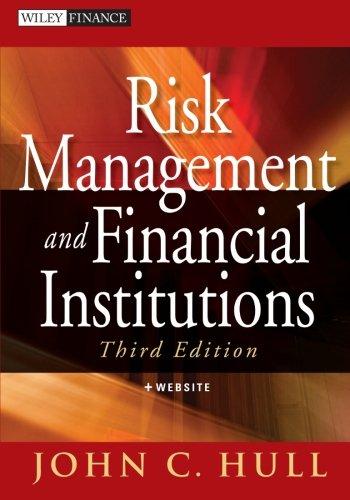Question
Assumed market conditions: There are only two assets in the world. Stocks have an expected return of 10% and standard deviation of 30%; T-bills are
Assumed market conditions: There are only two assets in the world. Stocks have an expected return of 10% and standard deviation of 30%; T-bills are risk-free and return 5% per year. Assume that the stock and T-bill returns shown at the outset are normally distributed. Also, assume that the investor has a mean-variance utility function with a risk aversion parameter of A = 2.
a) Would the investor prefer a portfolio consisting only of stocks to a portfolio consisting only of T-bills?
b) What risk-free rate on T-bills would make the investor indifferent between the two portfolios in (a)?
c) Draw a graph of expected returns versus volatility, including a point (B) for the pure T-bill portfolio, a point (E) for the pure stock portfolio, and a capital allocation line describing all possible combinations of T-bills and stocks - i.e., complete portfolios. Draw the two investor indifference curves that pass through points B and E.
d) Find the portfolio weight of stocks in the complete portfolio that the investor likes just as much as investing in all T-bills. Mark this point on your graph in part (c).
e) Find the portfolio weight of stocks in the complete portfolio (P) that maximizes the investor's utility, among all possible portfolios on the capital allocation line. Draw the indifference curve through this portfolio on your graph in part (c).
f) What is the Sharpe ratio of the pure stock portfolio (E)? Does the reward-risk ratio on portfolio P differ from the reward-risk ratio of portfolio E?
g) If the investor had a risk aversion of A = 4 instead, what complete portfolio would maximize the investor's utility? Redraw your graph in part (c), (d), and (e) for this investor.
h) Does the investor with A = 4 pick a complete portfolio with a greater or lesser weight on stocks than the investor with A = 2? Would the equity premium be higher or lower if all investors have A = 4 (as compared to A = 2)?
Step by Step Solution
There are 3 Steps involved in it
Step: 1

Get Instant Access to Expert-Tailored Solutions
See step-by-step solutions with expert insights and AI powered tools for academic success
Step: 2

Step: 3

Ace Your Homework with AI
Get the answers you need in no time with our AI-driven, step-by-step assistance
Get Started


